
The P-3C is a land-based, long range anti-submarine warfare (ASW) patrol aircraft. It has advanced submarine detection sensors such as directional frequency and ranging (DIFAR) sonobuoys and magnetic anomaly detection (MAD) equipment. The avionics system is integrated by a general purpose digital computer that supports all of the tactical displays, monitors and automatically launches ordnance and provides flight information to the pilots. In addition, the system coordinates navigation information and accepts sensor data inputs for tactical display and storage. The P-3C can either operate alone or supporting many different customers including the carrier battlegroup and amphibious readiness group. The aircraft can carry a variety of weapons internally and on wing pylons, such as the Harpoon anti-surfacemissile, the MK-50 torpedo and the MK-60 mine.
- The Harpoon Stand-Off Land Attack Missile (SLAM) launched from the P-3C Orion aircraft provides commanders with the ability to immediately deploy a long range responsive platform that can remain on-station for extended periods of time, retask targets in flight, and deliver up to four over-the-horizon precision weapons in minutes. The same aircraft can then remain on station and continue to target other platforms' missiles by the use of its Electro-Optical, Rapid Targeting System (RTS) and real time data link capabilities.
- The AN/ALQ-158(V) Adaptive Controlled Phased Array System [ACPA] VHF sonobuoy receiving antenna system amplifies reception of sonobuoy signals. The ACPA now consists of: Two AS-3153/ALQ-158(V) Blade Antennas are installed; only omni-directional reception is provided; AM-6878/ALQ-158(V) Radio Frequency Amplifier equipment receives and amplifies the signals sent from the blade antennas and passes these amplified signals on to the AN/ARR-78 ASCL receiver.
- AN/ARR-78(V)1 Advanced Sonobuoy Communications Link [ASCL] Receiver contains 20 receiver modules, each capable of accepting RF operating channels 1-99 (those sonobuoy channels now in use and those being developed for future use). All 20 receiver modules may be tuned to any one of the sonobuoy operating frequencies. The ASCL consists of a Radio Receiver, Receiver Control/On-Top Position Indicator (OTPI), Control Indicator, and Receiver Indicator. Two R-2033/ARR-78(V)1 Radio Receiver units receive acoustic data for the SASP. Each has four auxiliary function channels which allow the TACCO to monitor the sonobuoy audio channels, BT light off detection, and OTPI reception. The C-10127/ARR-78(V)1 Receiver Control unit provides manual control of the OTPI receiver only, permitting the pilot to select the OTPI receiver and tune it to any one of the 99 channels. The C-10126/ARR-78(V) Control Indicator is the primary manual control for the ASCL Set is the control indicator. Each of the two units installed allows the operator to select and program any of the 20 receiver modules. Each of the two ID-2086/ARR-78(V)1 Receiver Indicator units simultaneously displays the status of all 20 receiver modules on a continuous basis.
- The AN/UYS-1(V) Single Advanced Signal Processor System [SASP] is a digital processor designed for the conditioning, analysis, processing, and display of acoustic signals. The SASP System is comprised of two basic elements. The TS-4271/UYS-1(V)10 Analyzer Detecting Set, also called the AU, is installed with a primary function of processing acoustic signals through the use of a Spectrum Analyzer TS-4271/UYS-1(V). It is protected from power transients by a PP-7467/UYS-1(V) Power Interrupt Unit (PIU). The CP-1808/USQ-78(V) SASP Display Control Unit (DCU), contains a programmable, modularity expandable system containing two independent computer subsystems, a System Controller, and a Display Generator (DG) and is also protected by a PIU. The DG also provides hardware interface to two Commandable Manual Entry Panels (CMEPs) C-11808/USQ-78(V), and two Multi-Purpose Displays (MPDs) IP-1423/ USQ-78(V). The two manual entry panels provide the operator an interface to control system operating modes and MPD visual presentations.
- With the AN/ALQ-78A Countermeasures Set the existing Countermeasures Set (AN/ALQ-78) is modified by an ECP which improved both maintainability and performance. This ECP was first introduced in the P-3C Update II (ECP-955 for production aircraft and ECP-966 for retrofit aircraft).
- The AN/ARS-5 Receiver-Converter Sonobuoy Reference System, a 99 Channel SRS, permits the continuous monitoring of a sonobuoy location from a stand-off position. The SRS provides "fly to" reference data to the CP-2044. It was fit into Lockheed I-9 aircraft serial 5812 Bureau Number 163005 and subsequent production aircraft and was retrofit into production P-3C Update III Aircraft.
- The AN/ARC-187 Ultra High Frequency Radio Set provides for a satellite communications capability. The two installed AN/ARC-143 UHF Radios were replaced by two AN/ARC-187 UHF Radios with the incorporation of ECP-988. This ECP is applicable to all P-3C Update III Aircraft. The AN/ARC-187 was installed in the P-3C Update III production aircraft delivered in May 1988 and subsequent. Retrofit installation by Lockheed Martin field teams has been completed.
- The CP-2044 Digital Data Computeris a single cabinet airborne computer equipped with high-throughput microprocessors, increased memory capacity, a dual bus system, and built-in diagnostics. Improvements to the CP-901 have resulted in a design which dramatically increases performance while maintaining the CP-901 footprint and significantly reduces weight and power requirements. Main shared memory is increased to one megaword, with an additional one megaword available for memory growth. In addition, each of the processor modules contain one megaword of local memory. These design improvements and the use of Ada language will accommodate future processing requirements and keep the system viable throughout the 1990s. Performance improvements are made possible by 15 new six by nine inch printed circuit cards. The CP-2044 features three Motorola 68030 microprocessors and card slots for four additional processors. Functions of the previously external AN/AYA-8 or OL-337(V)/AY Logic Units and the CV-2461A/A are incorporated in the CP-2044.
- The AN/ARN-151(V)1 Global Positioning System [GPS] provides highly accurate navigation information. The five-channel receiver processor unit continuously tracks and monitors four satellites simultaneously, while the fifth channel tracks another satellite for changeover to maintain an acceptable geometry between satellites.
- The AN/ALR-66A/B(V)3 Electronic Support Measures [ESM] Set provides concurrent radar warning receiver data (threat data) along with ESM data (fine measurement of classical parametric data). The AN/ALR-66B(V)3 Set provides increased sensitivity and processing improvements over its predecessor, the AN/ALR-66A(V)3. Further refinements to the operational flight program and the library will provide an operator tailorable library. The AN/ALR-66B(V)3 provides inputs to the EP-2060 Pulse Analyzer to detect, direction find, quantify, process, and display electromagnetic signals emitted by land, ship, and airborne radar systems.
 The P-3C Update III Anti-Surface Warfare Improvement Program [AIP] Aircraft will provide improvements in Command, Control, Communications, and Intelligence; surveillance and OTH-T capabilities; and survivability, to include the Maverick Missile System. Delivery of the P-3C Update III Anti-Surface Warfare (ASUW) Improvement Program (AIP) Aircraft to the fleet began 29 April 1998 and is scheduled to be complete at the close of FY00. The P-3C Update III AIP will be accomplished through the retrofit of P-3C Update III Aircraft that have the CP-2044 Digital Data Computer and AN/ALR-66B(V)3 Electronic Support Measures Set installed. Transition to the P-3C Update III AIP Aircraft began in April 1998. Since, as currently envisioned, squadrons will initially operate both the P-3C Update III and P-3C Update III AIP Aircraft, aircrew and maintenance personnel will require training for both aircraft configurations. Training track lengths will increase with the inclusion of the P-3C Update III AIP Aircraft information into existing training tracks. The P-3C Update III AIP Aircraft equipment includes:
The P-3C Update III Anti-Surface Warfare Improvement Program [AIP] Aircraft will provide improvements in Command, Control, Communications, and Intelligence; surveillance and OTH-T capabilities; and survivability, to include the Maverick Missile System. Delivery of the P-3C Update III Anti-Surface Warfare (ASUW) Improvement Program (AIP) Aircraft to the fleet began 29 April 1998 and is scheduled to be complete at the close of FY00. The P-3C Update III AIP will be accomplished through the retrofit of P-3C Update III Aircraft that have the CP-2044 Digital Data Computer and AN/ALR-66B(V)3 Electronic Support Measures Set installed. Transition to the P-3C Update III AIP Aircraft began in April 1998. Since, as currently envisioned, squadrons will initially operate both the P-3C Update III and P-3C Update III AIP Aircraft, aircrew and maintenance personnel will require training for both aircraft configurations. Training track lengths will increase with the inclusion of the P-3C Update III AIP Aircraft information into existing training tracks. The P-3C Update III AIP Aircraft equipment includes:- The IR Maverick Missile is an infrared-guided, rocket-propelled, air-to-ground missile for use against targets requiring considerable warhead penetration prior to detonation. The missile is capable of two pre-flight selectable modes of target tracking. The armor or land track mode is optimized for tracking land-based targets such as tanks or fortified emplacements. The ship track mode is optimized for tracking seaborne targets. The missile is capable of launch-and-leave operation. After launch, automatic missile guidance is provided by an imaging infrared energy sensing and homing device.
- The AN/AAS-36A Infrared Detecting Set [IRDS] provides passive imaging of infrared wavelength radiation to visible light emanating from the terrain along the aircraft flight path for stand-off detection, tracking, and classification capability. The IRDS update will primarily consist of an improved A-focal lens.
- The AN/AVX-1 Electro-Optical Sensor System [EOSS] is an airborne stabilized electro-optical system that provides video for surveillance and reconnaissance missions. The AN/AVX-1 EOSS has the capability to detect and monitor objects during the day from exceptionally clear to medium hazes, dawn and dusk, and during the night from a full moon to starlight illumination.
- The AN/APS-137B(V)5 Radar is capable of multimode operation to provide periscope and small target detection, navigation, weather avoidance, long range surface search and Synthetic Aperture Radar (SAR) and ISAR imaging modes. SAR provides detection, identification, and classification capability of stationary targets. ISAR provides detection, classification, and tracking capability against surface and surfaced submarine targets. The AN/APS-137B(V)5 ISAR provides range, bearing, and positional data on all selected targets, and provides medium or high resolution images for display and recording.
- The EP-2060 Pulse Analyzer works in conjunction with the AN/ALR-66C(V)3 to detect, direction find, quantify, process, and display electromagnetic signals emitted by land, ship, and airborne radar systems.
- Three Color High Resolution Display [CHRD] general purpose, dual channel, closed circuit units provide the operator with improved Operator-Machine-Interface and 1024 X 1280 pixel landscape orientation, improved response time to operator commands, and an increase of 300 percent in the video refresh rate to minimize display flicker. Five types of data may be displayed on the CHRD: cursors, cues, tableau, alerts, and raw video.
- The Pilot Color High Resolution Display [PCHRD] provides the ability to display complex tactical and sensor information to the pilot station.
- The Over-the-Horizon Airborne Sensor Information System [OASIS] III data is received and prepared for transmission via the OASIS III Tactical Data Processor (TDP). OASIS III processes and correlates all data provided via MATT and Mini-DAMA. The OASIS III TDP provides an Officer in Tactical Command Information Exchange System (OTCIXS) message link, coupled with GPS-aided targeting using the AN/APS-137B(V)5 Radar.
- The OZ-72(V) Multi-Mission Advanced Tactical Terminal [MATT] system will provide Tactical Receive Equipment (TRE) capability to receive and decrypt three simultaneous channels of Tactical Data Information Exchange Subsystem (TADIXS-B), Tactical Related Applications (TRAP), and Tactical Information Broadcast Service (TIBS) information. The system will route the received broadcast data to the OASIS III for further processing.
- The AN/USC-42(V)3 Miniaturized Demand Assigned Multiple Access [Mini-DAMA] will provide for secure voice communications. Mini-DAMA provides for the transmission, reception, and decryption of OTCIXS data and the subsequent routing of that data to the OASIS III TDP.
- The AN/AAR-47 Missile Warning System [MWS] is a passive electro-optical system designed to detect surface-to-air and air-to-air missiles. Upon detection of an incoming missile, the MWS will report the impending threat to the Countermeasures Dispensing System (CMDS).
- The AN/ALE-47 Countermeasures Dispensing System [CMDS] will be used for dispensing flares, chaff, non-programmable expendable jammers, and programmable jammers.
- The AN/ALR-66C(V)3 Electronic Support Measures Set provides all the same features as an AN/ALR-66B(V)3 ESM Set. However, the ALR-66C(V)3 Set incorporates the AS-105 spinning DF antenna and the Operational Flight Program is modified to accommodate this configuration difference. Also included is the EP-2060 Pulse Analyzer, an upgrade to the ULQ-16.
NATO's Operation Allied Force marked the combat debut of the P-3C Antisurface Warfare Improvement Program (AIP). The Mediterranean maritime patrol force for these operations included ten P-3Cs, five of the AIP variant, and 14 crews from Patrol Squadrons 1, 4, 5 and 10 from Naval Air Stations Whidbey Island, Barbers Point, Jacksonville and Brunswick, respectively. On March 22, two days before the start of hostilities, P-3C AIP aircraft began flying around-the-clock armed force protection surveillance flights in the Adriatic Sea in direct support of afloat Tomahawk Land Attack Missile (TLAM) shooting ships. For the next 94 days, Maritime Patrol Aircraft (MPA) provided 100 percent of the Surface Combat Air Patrols (SUCAP) for the USS Theodore Roosevelt Carrier Battle Group and other allied ships operating in the area. This marked the first time surface combat air patrols during actual combat operations have been performed exclusively by non-carrier organic aircraft.
CTF-67 AIP-equipped P-3�s were able to directly observe commercial contraband ships as well as Yugoslav boats and ships moored at coastal sites and underway. The images were downlinked to the USS Theodore Roosevelt battle group commander, giving the battle group an unprecedented real-time and near real-time view of the tactical situation. In all, CTF-67 aircraft detected and reported over 3,500 surface contacts. In another first, AIP-equipped P-3�s fired a total of 14 Standoff Land Attack Missiles (SLAMs) at Serb targets. Because of the P-3�s ability to stay on-station for hours at a time, battle group commanders had the flexibility to hit mobile targets on short notice. This in-flight planning/re-targeting ability for SLAM strikes validated the importance of the P-3�s strike role.
The Counter Drug Update Equipment update is a Chief of Naval Operations (CNO) identified urgent requirement to equip a limited number of active and reserve P-3C Update III Aircraft with a RORO capability to install all or selected systems to counter narcotic trafficking operations. Counter Drug Update systems include:
- Air-to-Air Radar System AN/APG-66
- EOSS AN/AVX-1(V)1
- Project Rigel Communications Equipment
The Sustained Readiness Program (SRP) provides for the preemptive replacement of airframe components and systems identified as having potential for significant impact on future aircraft availability because of excessive time to repair, obsolescence, component manufacturing lead time, or cost impact. The SRP kit is comprised of a set of core installations and repairs that must be performed on each aircraft and a set of conditional installations and repairs. The need for the conditional installations and repairs will be determined by inspections performed on each aircraft as it is inducted. In addition, the fuel quantity system will be replaced with a Digital Fuel Quantity System (DFQS). The first SRP aircraft under went modification and was completed in first quarter FY97.
The Electronic Flight Display System (EFDS) is an updated version of the Flight Display System (FDS). It is defined as the flight instrument, associated controls, and its interface to the aircraft, and is designed to provide the pilot, co-pilot, or Navigation/Communication (NAV/COMM) Officer with a comprehensive, unambiguous presentation of navigation information adequate for both worldwide tactical and non-tactical navigation. The display unit uses a flat panel domestic Active Matrix Liquid Crystal Display (AMLCD). The FDS functionally replaces the P-3 electro-mechanical Horizontal Situation Indicator (ID-1540/A), electro-mechanical Flight Director Indicators (FDI) (ID-1556), selected functions of the Navigation Availability Advisory Lights, and integrates GPS navigation with the flight instruments. Additional information such as navigational aid waypoint locations, GPS annunciation, and FDS status pages are also displayed.
Due to the high operational expense of the Inertial Navigation Unit currently installed, a Replacement Inertial Navigation Unit (RINU) has become necessary. The RINU will be installed coincidental with the EFDS and training will be developed to include both systems.
Specifications | ||||
| Primary Function | Antisubmarine warfare(ASW)/Antisurface warfare (ASUW) | |||
| Contractor | Lockheed | |||
| P-3A | P-3B (L) | P-3B (H) | P-3C | |
| Date Deployed | August 1962 | August 1969 | ||
| Power Plant | Four T56-A-10 Allison turbo prop 4,300 horsepower each | Four T56-A-14 Allison turbo prop 4,600 horsepower each | ||
| Maximum gross weight | 127,500 lbs | 127,500 lbs | 139,760 lbs | 139,760 lbs |
| Endurance | 10-13 hr | 10-13 hr | 10-13 hr | 10-13 hr |
| Crew composition | 5 - minimum flight crew 11 - normal crew 21 - maximum accomodation | |||
| Cruise speed (average) | 330 knots | 330 knots | 330 knots | 330 knots |
| Fuel capacity (approximate) | 60,000 lbs | 60,000 lbs | 60,000 lbs | 60,000 lbs |
| Fuel consumption (lb/hr) | 4000-5000 | 4000-5000 | 4000-5000 | 4000-5000 |
| Unit Cost | $36 million (FY 1987) | |||
| Armament | up to around 20,000 pounds (9 metric tons) internal and external loads Bomb Bay:
8 MK 54 Depth Bombs 3 MK 36/52 1000 lb Mines 3 MK 57 Depth Bombs 2 MK 101 Depth Bombs 1 MK 25/39/55/56 2000 lb Mine Two Center-Section Pylons:
2 Maverick (AGM 65) 2 MK 46/50 Torpedoes 2 2000 lb Mines [Per Wing -Inboard to Outboard):
2 MK 46/50 Torpedo or 1000 lb Mine or Rockets 2 MK 46/50 Torpedo or 500 lb Mine or Rockets
2 MK 101 depth bombs 4 MK 50 torpedoes 87 sonobuoys pyrotechnics, signals, | |||
P-3C TECHNICAL DATA:External Dimensions
| Internal Dimensions
| ||||||||||||||||||||||||||||||||||||||||||||||
Areas
| |||||||||||||||||||||||||||||||||||||||||||||||
Weights and Loadings
| Performance
|
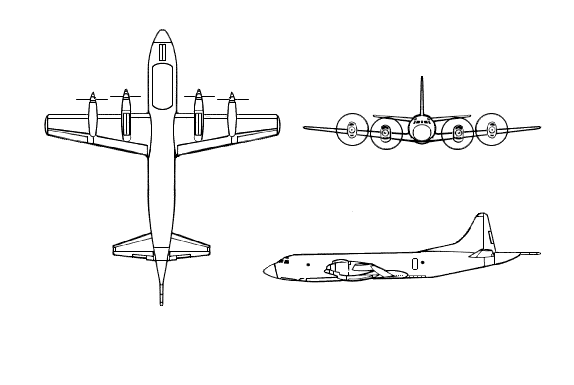
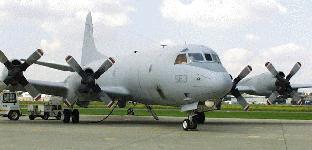
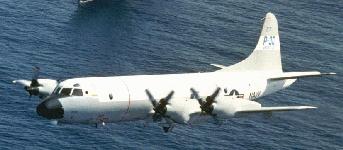
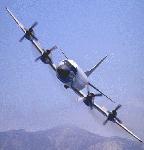

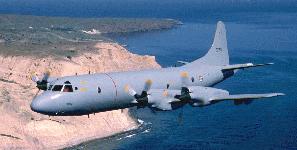
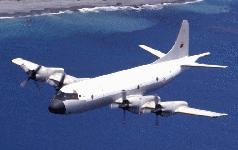
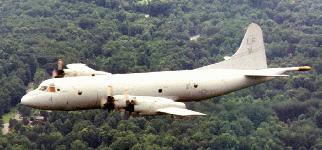
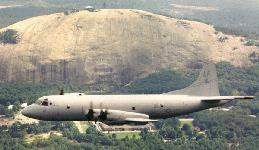
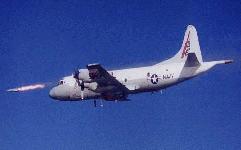
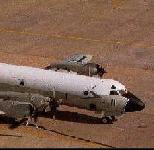
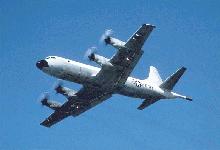
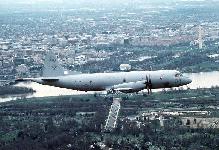
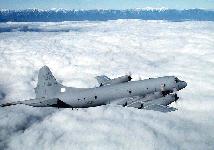
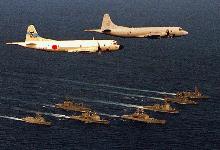
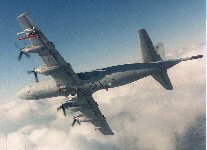
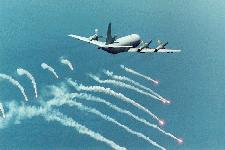
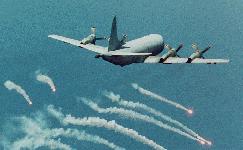
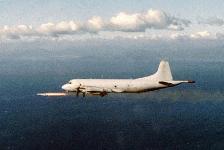
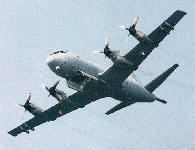

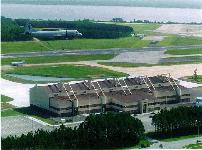
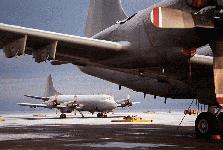
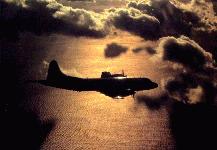
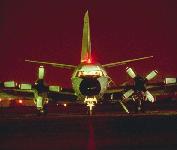






No comments:
Post a Comment